Gyeongju Wolseong Palace Site (Banwolseong Fortress) (경주 월성(반월성))
2.1Km 25901 2023-01-03
Inwang-dong, Gyeongju-si, Gyeongsangbuk-do
+82-10-3226-6390
This was the location of the palace-fortress during the Silla dynasty (57 BC ~ AD 935). The fortress takes after its name, which, literally translates to mean a crescent moon shape on top of a hill. The famous history books of Samgukyusa mention that Silla’s 4th King Seoktalhae (AD 57~80) thought this area was an ideal spot for the fortress and bought the land from a nobleman. The 2nd King Namhae (AD 4~24) impressed by Seoktalhae’s actions, took him in as his son-in-law, later, becoming the 4th king. The area was then under Silla’s rule for 900 years, the last king being the 56th, Gyeongsoon (AD 927~935).
Although the magnificent grandeur of the palace is now just an empty lot, it has been told that this area was filled with imperial buildings during the Silla dynasty. Currently, the region of Wolseong has a freezer made out of rocks called Seokbinggo, an archery range, a horse-riding field, and a traditional playground, which resembles the grounds of the Joseon Period (the dynasty that ruled the Korean peninsula from 1392-1910).
Cheomseongdae Observatory (경주 첨성대)
2.1Km 109092 2023-07-07
140-25, Cheomseong-ro, Gyeongju-si, Gyeongsangbuk-do
+82-54-772-3843
Cheomseongdae Observatory, constructed during the reign of Queen Seondeok (r. 632-647), is one of the landmark of Gyeongju. The observatory was built in a cylinder shape at approximately 9 meters in x_height. The observatory consists of 365 stones, symbolizing the number of days in a year. The rocks are piled in 27 layers symbolizing the 27th ruler, Queen Seondeok, and the days in a lunar month by adding the of two rock layers on top.
Gyeongju Bae-dong Samneung Royal Tombs (경주 배동 삼릉)
2.1Km 24056 2020-04-06
Bae-dong, Gyeongju-si, Gyeongsangbuk-do
+82-54-779-6100
Samneung meaning "three royal tombs," has strong ties to history. The three royal tombs house three kings of the Silla Kingdom: King Adala (8th King of the dynasty), King Sindeok (53rd) and King Gyeongmyeong (54th).
King Adala, who cared deeply for his people, went to war after his citizens were abducted by the invaders of Baekje. But when Baekje asked for a peace treaty, King Adala released the prisoners he took during the engagement. During his rulling, a kingdom in Japan sent an envoy to ask for friendly relations with Silla. King Adala’s tomb is 58m in circumference at the base, 5.4m in x_height and 18m in diameter.
When King Hyogong died without any heirs, the people of the kingdom crowned his son-in-law as their next king – King Sindeok. During his reign, King Sindeok devoted himself to protecting his kingdom from invasions by Gyeonhwon and Gungye. The royal tomb is 61m in circumference at the base, 5.8m in x_height and 18m in diameter. It was robbed twice, inviting investigations in 1953 and 1963. The investigations revealed the tomb to be a chamber made of stone.
King Gyeongmyeong, the son of King Sindeok, together with Wanggeon, the founder of the Goryeo dynasty, successfully defeated Gyeonhwon’s attack against Daeyaseong Fortress. During his reign, he attempted to establish diplomatic relations with the Hudang dynasty of China, but was unsuccessful. The tomb is 50m in circumference at the base, 4.5m in x_height and 16m in diameter.
Seokbinggo (Stone Ice Storage) (경주 석빙고)
2.2Km 24923 2020-04-06
Inwang-dong, Gyeongju-si, Gyeongsangbuk-do
+82-54-779-6100
Seokbinggo means a freezer made of rocks. It is an ancient refrigerator only in Korea. It is located in Gyeongju, the ancient capital of the Silla Era (BC57-AD935). The appearance of this wonderful vestige is humble and simple. But you will not be disappointed at the entrance of the freezer. You can feel the cold from inside the structure. Half of Seokbinggo is underground while the other half is above ground, signifying the scientific propensity of Korea. The floor, walls, and ceiling are made of granite and have an airway. The walls are covered with limestone to keep off moisture and water. The floor is slanted to allow melted ice to funnel out. Frozen ice was popular for the upper class. From historical annals, it is assumed that Seokbinggo was made at least 1,500 years ago. Seokbbingo has been designated as National Treasure No. 66.
Gyeongju Cherry Blossom Festival (경주벚꽃축제)
2.2Km 62847 2023-03-20
10 , Gyerim-ro, Gyeongju-si, Gyeongsangbuk-do
• 1330 Travel Hotline: +82-2-1330 (Korean, English, Japanese, Chinese) • For more info: +82-777--5951~3
Historical city of Gyeongju annually hosts the Gyeongju Cherry Blossom Festival from late March to early April. Visitors to Gyeongju will be able to enjoy a festival that combines cherry blossoms with art and culture.
Ipungnyeo Guro Ssambap (이풍녀구로쌈밥)
2.3Km 42147 2024-02-23
155 Cheomseong-ro, Gyeongju-si, Gyeongsangbuk-do
054-749-0600
Near the Cheomseongdae Observatory in Gyeongju, Ipungnyeo Guro Ssambap is renowned for its signature dish, Guro ssambap (leaf wraps and rice set menu). The dish is accompanied by jeyuk bokkeum (spicy stir-fried pork) and doenjang jjigae (soybean paste jjigae), along with a diverse array of side dishes and ten different types of vegetables for wraps. The restaurant focuses on preserving the natural flavors of the ingredients, using minimal chemical seasonings. Its commitment to providing a hearty and wholesome meal attracts numerous visitors.
Wiyeonjae Hanok Stay [Korea Quality] / 위연재 [한국관광 품질인증/Korea Quality]
2.3Km 4 2021-03-29
7, Jjoksaem-gil, Gyeongju-si, Gyeongsangbuk-do
This hanok (traditional Korean house) is located very near to Cheomseongdae Observatory. Its location in front of the Gyeongju Historic Areas allows guests to reach major sights in Gyeongju like Daereungwon Ancient Tomb Complex, Donggung Palace and Wolji Pond, and Hwangnidan-gil Street by foot. This hanok symbolizes the historicity of the city of Gyeongju in that during its construction a female skeleton and accessories made out of precious metals were excavated from the site. The accommodation’s name comes from the idiom “Muwijayeon (leaving nature as it is),” combining bamboo and pine trees with green grass, show its dedication to ideals of rest and philosophy.
There are five rooms in total, all ondol (under-the-floor heating system) rooms for two. Korean paper lining the walls and old-fashioned furniture speak to the ideal beauty of hanok. The raised floor space, which is attached to the “Munmu” room, is a great place to enjoy the scenery and take pictures. All rooms have modern bathrooms with shower facilities, and a complimentary breakfast is served in the cafe on site from 8:00 to 9:00 in the morning. The complex has abundant parking spaces for the guests.
Hwangnamguan [Korea Quality] / 주식회사 황남관 [한국관광 품질인증]
2.3Km 18904 2020-12-16
1038, Poseok-ro, Gyeongju-si, Gyeongsangbuk-do
+82-10-3518-4582
Located in Gyeongju City, Hwangnamgwan is a traditional Korean style accommodation which opened in April 2014. The place looks like a small hanok village with 4 one-story buildings and 2 two-story buildings, constructed on about 5000㎡ of building site. The buildings are equipped with modern convenience facilities but manage to preserve the antique flavor of traditional Korean house. All rooms are equipped with a bathroom. A bathtub is installed in the largest room, Numaru Suite. Auxiliary facilities include the seminar room which is located in the two-story building. There are a cafe and a pizza restaurant on the first floor for meetings or simple meals. Guests are given discount coupons for the cafe.
Various traditional plays can be enjoyed in the hanok. It is possible to take photos with the beautiful Hwangnamgwan building in the background wearing traditional Korean clothes. You can also play Neolttwigi, Tuho, and Jegichagi in the wide yard and experience twisting legs, bastinado, turning the millstone, fulling, Pogurak (dancing play), etc. which have appeared on TV dramas. It is possible to receive discounted services at nearby affiliated facilities: 50% discount at Spalux Jjimjilbang, Kids Cafe, and Sport Town Bowling Center. Famous tourist attractions such as Cheonmachong Tomb, Cheomseongdae Observatory, and Banwolseong Fortress are within walking distance; and the National Gyeongju Museum and Gyeongju World Culture Expo Park are likewise not far from Hwangnamgwan.
Huewon [Korea Quality] / 휴원 [한국관광 품질인증]
2.4Km 10427 2019-12-05
154, Chunghyoseoak-gil, Gyeongju-si, Gyeongsangbuk-do
+82-10-5651-1253
Huewon (休垣)
Huewon is a cozy hanok guesthouse located in Seoak-dong, Gyeongju. Since Gyeongju had been the capital of the Silla Dynasty for about a thousand years, Huewon is surrounded by various cultural heritage sites such as Tomb of King Muyeol, Tomb of King Jinji, and Seoakseowon Confucian Academy with a serene atmosphere.
Built in the 1970s and renovated later, Huewon started its accommodations service around 2011. Entering the gate, one can see a square-shaped courtyard giving a very bright and warm impression, in the middle of which is an old beautiful magnolia tree that is popular among visitors.
The garden is well-arranged with flower trees and bonsai trees and decorated with vintage items such as an old well and a water pump. Behind the house, the surroundings along with the low-altitude Seondosan Mountain make for beautiful seasonal scenery.
This cozy and pleasant hanok house has been well-maintained with the will and care of the owner, preserving the traditional hanok features including columns, beams, and rafters of the ceiling that show traces of time past.
The guestrooms are bright and clean with a delicate fragrance. Aside from red clay walls and clean beddings, however, there are no other additional facilities such as BBQ set because the guesthouse seeks to offer guests a quiet, healthy, and stable environment.
The guesthouse’s host, who has lived in Gyeongju for about 30 years and has engaged in promoting Gyeongju’s cultural heritages, willingly recommends to guests special travel destinations in Gyeongju and tells stories about Gyeongju.
In particular, the way to Dobongseodang Village School located behind Huewon is highly recommended by the host. Going up to the village school early morning, one is treated to a fantastic open view of Gyeongju in the fog. Moreover, Namsan Mountain, nicknamed Outdoor Museum since it is full of various Buddhist statues and towers here and there, is another recommended destination near the guesthouse.
Gyeongsangbuk-do Forest Research Institute (경상북도 산림환경연구원)
2.4Km 33773 2021-02-01
367, Tongil-ro, Gyeongju-si, Gyeongsangbuk-do
+82-54-778-3813
Located at the foot of Namsan Mountain in Gyeongju, Gyeongsangbuk-do Forest Research Institute is a popular spot for field trips and relaxation due to the institute's rare and rural forestry along with well-preserved endangered plants and wild flowers.
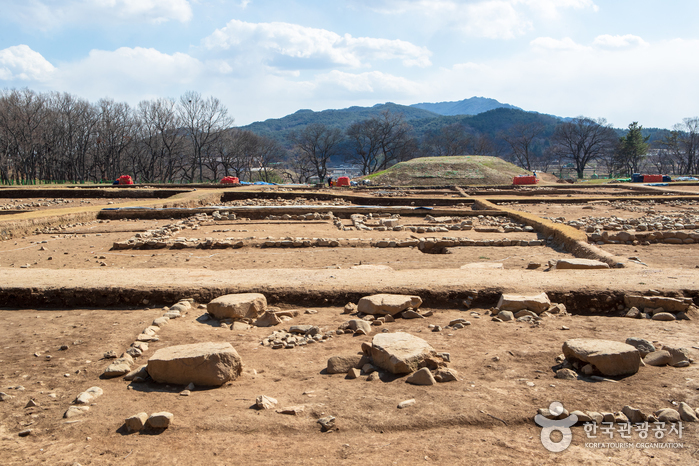

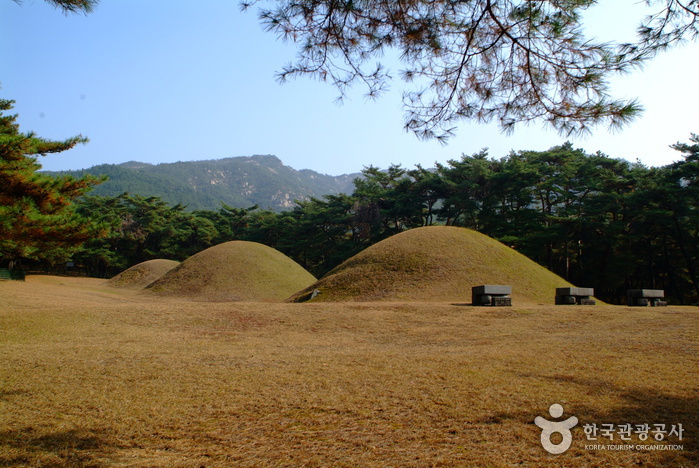
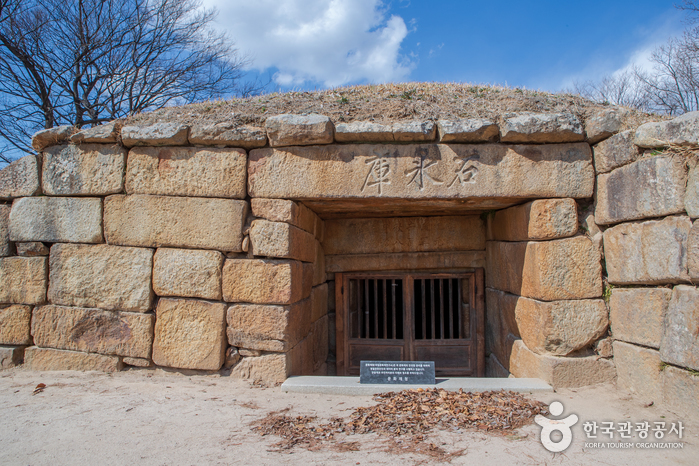
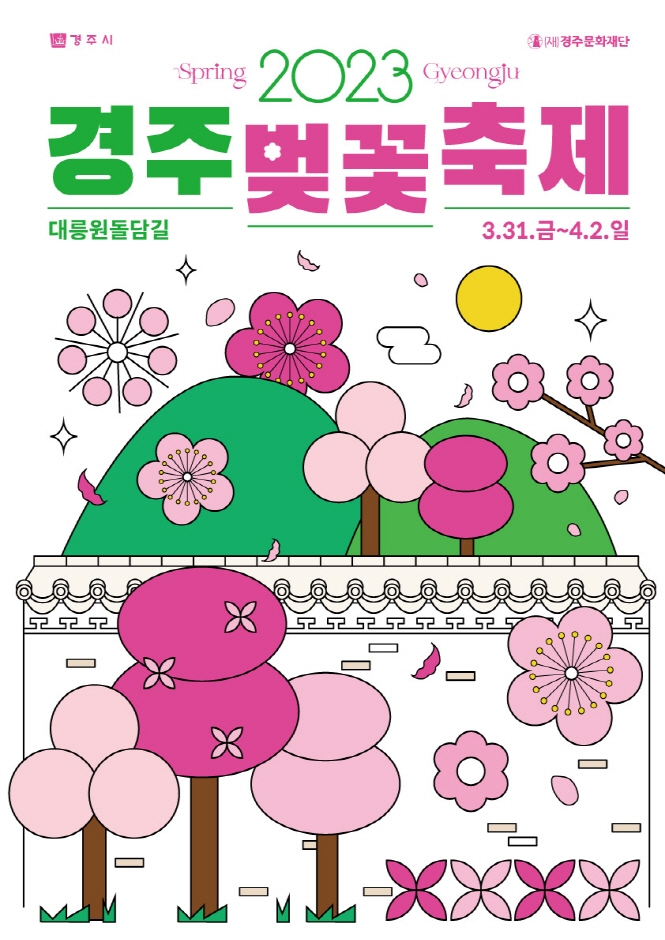
![Wiyeonjae Hanok Stay [Korea Quality] / 위연재 [한국관광 품질인증/Korea Quality]](http://tong.visitkorea.or.kr/cms/resource/51/2708951_image2_1.jpg)
![Hwangnamguan [Korea Quality] / 주식회사 황남관 [한국관광 품질인증]](http://tong.visitkorea.or.kr/cms/resource/06/2635706_image2_1.jpg)
![Huewon [Korea Quality] / 휴원 [한국관광 품질인증]](http://tong.visitkorea.or.kr/cms/resource/45/2636545_image2_1.jpg)
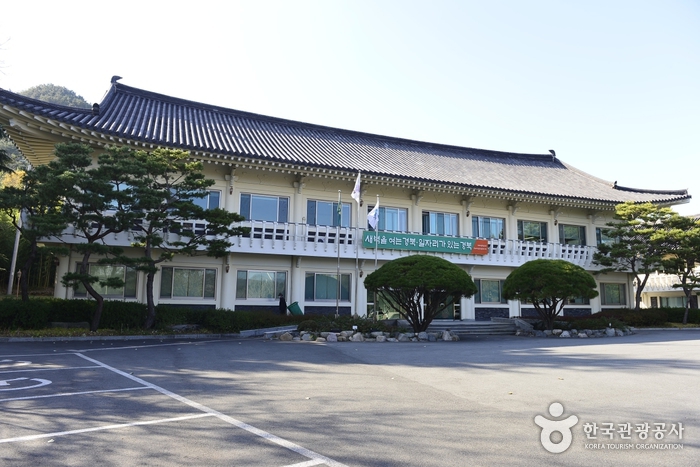
 English
English
 한국어
한국어 日本語
日本語 中文(简体)
中文(简体) Deutsch
Deutsch Français
Français Español
Español Русский
Русский